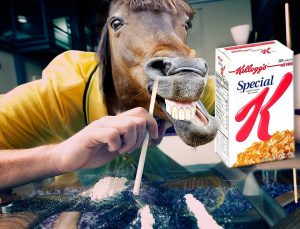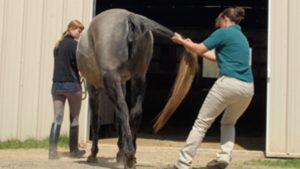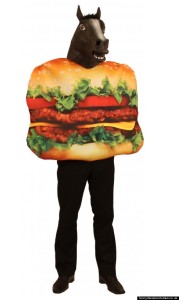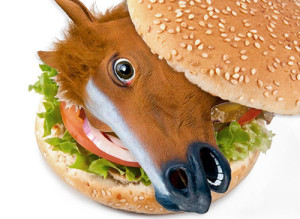The veterinarian’s choice of drug – the horse sedative, ketamine – has been used by Minnesota police types to sedate people in custody, according to NPR.
 I was married to a vet for 16 years and she had lots of tales about ketamine, but no evidence she used it herself, but I’ve met a few vets in rehab, and they liked their ketamine.
I was married to a vet for 16 years and she had lots of tales about ketamine, but no evidence she used it herself, but I’ve met a few vets in rehab, and they liked their ketamine.
Ketamine, a powerful sedative is used in hospitals as an anesthetic and more recently, to treat depression. It’s also been called the date-rape drug. And now, city investigators in Minneapolis have found that police officers there directed paramedics to inject the drug into people on the street to subdue them. This, according to a draft report that was obtained by the Star Tribune. Andy Mannix is the reporter at the Star Tribune who broke the story, and he’s with us now. Andy Mannix, welcome. Thanks so much for speaking to us
MARTIN: What did we find from this report? I mean, for example, how do we know that the police were directing the paramedics to use the powerful sedative? And were there some other patterns that emerged when they reviewed all this information?
MANNIX: One of the issues that’s been alarming to a lot of people is just like how casually police and paramedics talk about this drug. So, we have one example where there’s a person who’s sort of being combative. The police officer is talking about ketamine. Give him a shot of ketamine – stuff like that. And then they give him two shots and then the guy sort of starts coming out of it and so they give him another shot. And the police officer – he says, he just hit the K-hole. So, they’re talking about in a way that’s almost like joking about it. There’s other examples of people saying, you know, calling a paramedic and saying bring ketamine, bring ketamine.
MARTIN: So tell us, who was being injected with this drug and what happened to them?
MANNIX: So most of the time they are – they’re calls dealing with someone who may be intoxicated or in a mental health crisis, you know, sort of like a minor nuisance crime – if a crime has been committed. So, in terms of what happens to these people, almost all of them – actually I think all of them get taken to the hospital.
MARTIN: The reports suggest that there was a large increase in the use of ketamine in recent years. There were reported of 3 incidents in 2012 and then there were 62 last year. Does the report offer any insight into why?
MANNIX: We have, in interviews with medical staff, asked that question many times and they say that there are more – there’s been a record amount of incidents involving severely agitated people. Paramedics and doctors would say that’s when someone is so agitated that they may hurt themselves or hurt somebody else. So they’re saying they’re running into more examples of this kind of behavior on the street.
MARTIN: On the other hand, though, the county hospital where the EMTs work was conducting studies on ketamine. The question arises, were they being sort of pressured?
MANNIX: You know, the scope of the oversight report is mostly police, but they do touch on this a little bit. There’s one case in particular where someone, you know, being recorded on police body camera asks why they sedated somebody and the paramedic talks about the study and says well, you know, we’re doing this study and so we needed to give them ketamine. There was one woman we talked to who had relapsed on alcohol and she was in her apartment and her sponsor, an AA, called and said can you just do a welfare check on my friend. I just want to make sure she’s OK. They ended up coming into her apartment – said she didn’t want this drug, they gave it to her anyway.
She wakes up 24 hours later with a breathing tube down her throat. And then on her way out, they hand her this form that says, by the way, you know, you’re enrolled in this study. And that’s pretty common, that’s a pretty typical story. There are several investigations going on right now including one with former acting U.S. Attorney General Sally Yates. She’s been appointed by the mayor, here, to come in and do an independent investigation. So obviously they’re very concerned.
MARTIN: That’s Andy Mannix. He’s a reporter at the Star Tribune in Minneapolis. Andy, thanks so much for speaking to us.
MANNIX: Hey, thanks for having me.
 This toxin can accumulate in the offal and musculature of monogastric
This toxin can accumulate in the offal and musculature of monogastric







